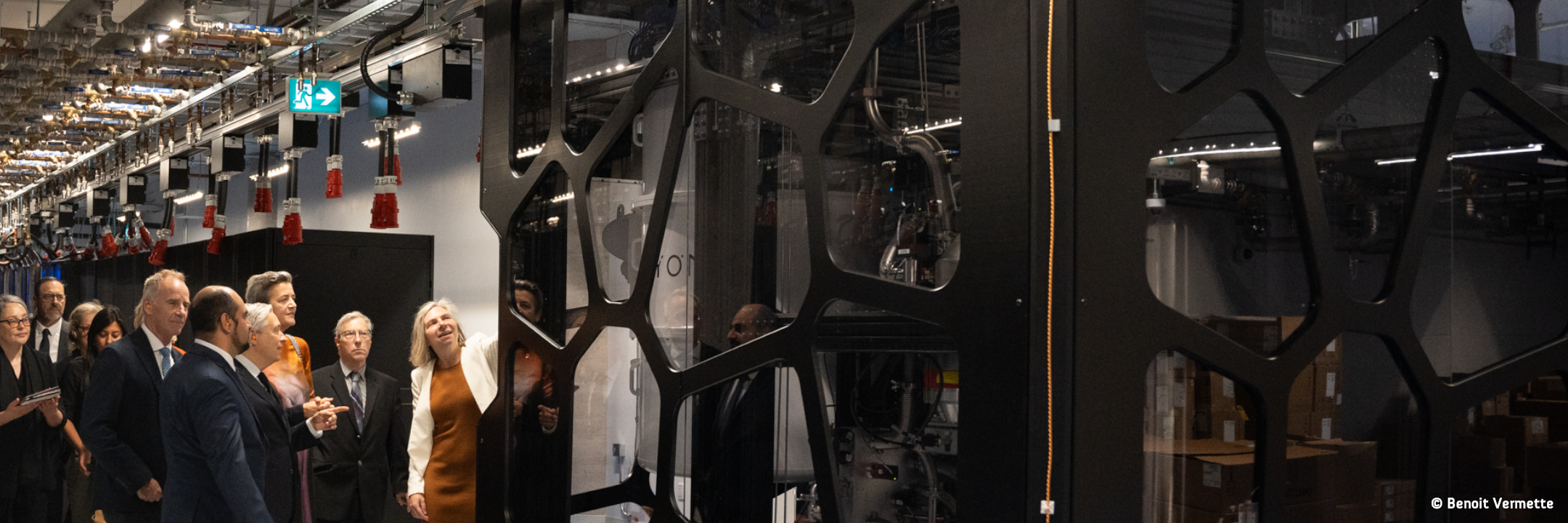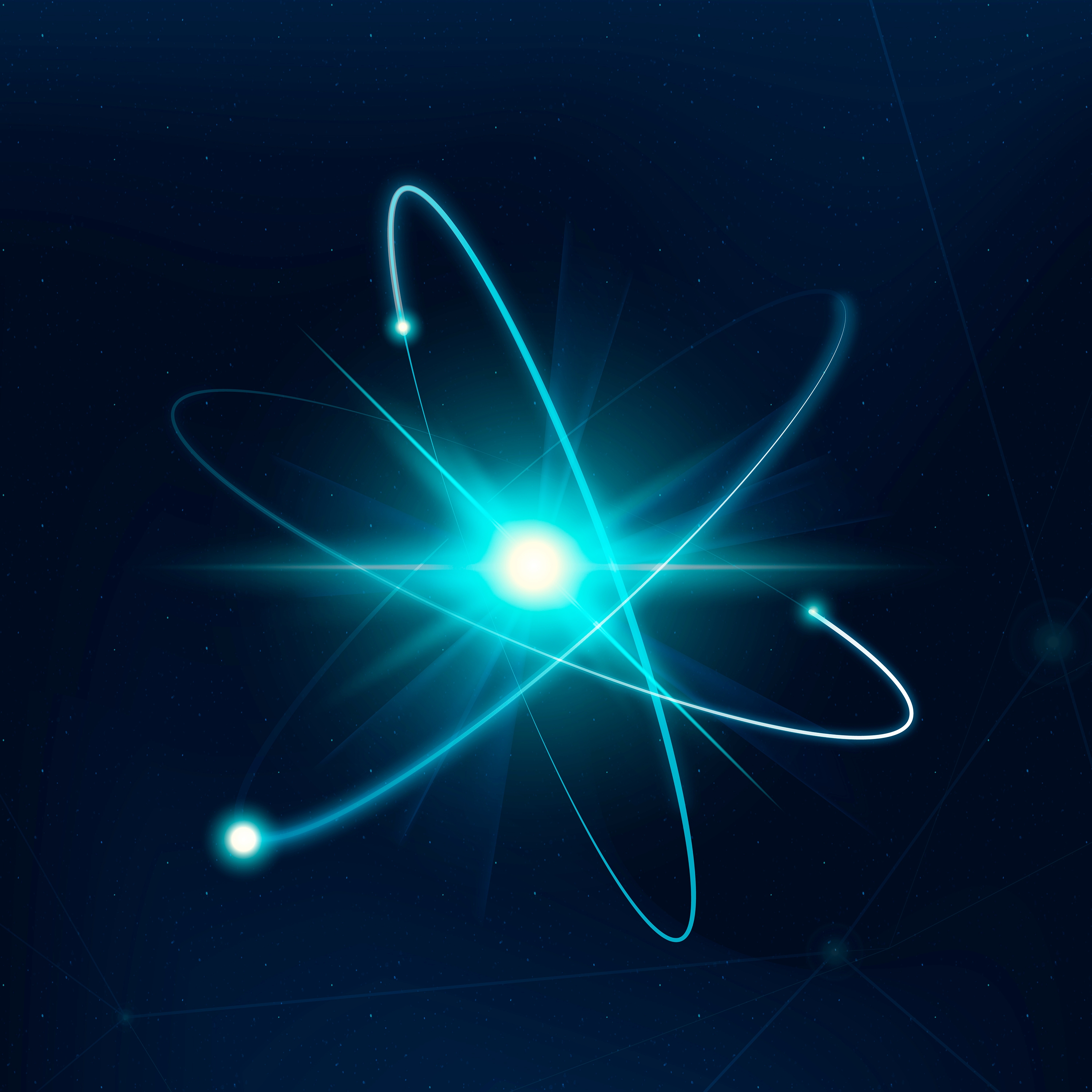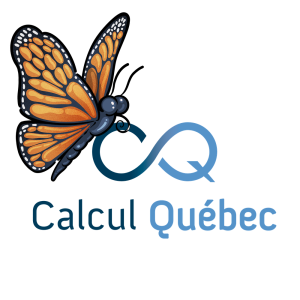A quantum computer named “MonarQ”

The MonarQ quantum computer, inaugurated with leaders in research and innovation. Photo: Benoit Vermette (September 25, 2024)
Quantum computers promise to revolutionize various research fields and industries through its extraordinary computational capabilities. But why are they special, and what makes the MonarQ computer so unique? Let’s find out together.
What is a quantum computer?

Illustration of a atom – RawPixel / Freepik.
Whereas a classical computer processes a single piece of information at a time, a quantum computer processes several pieces of information at once. Why? Because it operates according to the principles of quantum physics, a branch of science that studies matter on an infinitesimal scale.
When we observe phenomena at this small scale, which is around 1 million times smaller than a human hair, particles behave in special ways. Exploiting these quantum behaviors enables us to rapidly solve certain problems that are difficult to solve on conventional computers, through what is known as quantum computing.
Why MonarQ? And what will it be used for?
 MonarQ is the name given by the Calcul Québec team to their quantum computer. It refers to the “monarch” butterfly, a symbol of evolution and migration. The capital Q refers to the quantum nature of the computer and its Quebec origin.
MonarQ is the name given by the Calcul Québec team to their quantum computer. It refers to the “monarch” butterfly, a symbol of evolution and migration. The capital Q refers to the quantum nature of the computer and its Quebec origin.
This quantum computer measures over 37 cubic meters. It is surrounded by supercomputers in a data center at the École de technologie supérieure (ÉTS) in Montreal. It is adapted to current research needs and promises to solve problems using new approaches.
How does a quantum computer like MonarQ work?
No two quantum computers are exactly alike. Each uses different technologies. What all quantum computers have in common, however, is that they work with qubits, the basic units of quantum information.
| COMPONENT | FUNCTION | MONARQ |
| Qubits | Basic units of quantum information | 24 qubits |
| Control system | Manipulating qubits with specific signals | Microwave pulses |
| Measurement system | Reading qubit status after calculation | Microwave signal analysis |
| Cryogenics | Keeping qubits at very low temperatures to reduce disturbances | Helium cryostat keeping qubits at a temperature close to absolute zero, i.e. near -273°C |
Resources about MonarQ :
- To discover the report on MonarQ broadcast on the series program Découverte aired on September 15, 2024, visit the Radio Canada website (in French)
- Read our article about quantum computing
- To find out more about the technical specifications of MonarQ, visit the Digital Research Alliance of Canada wiki
- To find out more about the making of MonarQ, see the video of its assembly on Youtube or visit the Anyon Systems Inc. website
Calcul Québec is a non-profit organization specializing in advanced computing. Its main purpose is to serve the research and innovation community, giving it access to quality infrastructures and the skills needed to use them.
* This text was reviewed by Denise Koch, Quantum Computing Analyst at Calcul Québec.


